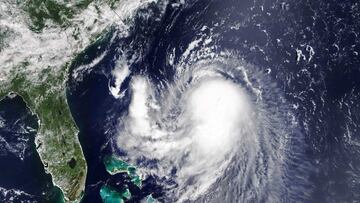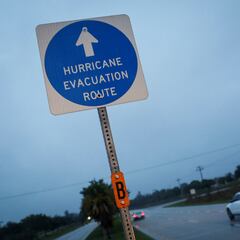When is the 2023 hurricane season? This is the NOAA forecast
According to NOAA, there will be an “near-normal” hurricane season in the Atlantic basin for the 2023 season. Here’s what the experts forecast.

The National Oceanic and Atmospheric Administration (NOAA) has released its annual forecast for the 2023 Atlantic hurricane season.
According to NOAA meteorologists, we will have a “near-normal” hurricane season this year, which is expected to start on June 1st; however, history from previous years has shown that storms often develop before this date, and even well after the season has ended.
Hurricane season 2023: This is the NOAA forecast
A NOAA “normal” season represents about 12 to 17 named tropical storms, of which, five to nine have a chance of becoming hurricanes. Of these, at least four are expected to become Category 3 or higher hurricanes.
“As we saw with Hurricane Ian, it only takes one hurricane to cause widespread devastation and upend lives. So regardless of the number of storms predicted this season, it is critical that everyone understand their risk and heed the warnings of state and local officials ,” said FEMA administrator Deanne Criswell.
NOAA is predicting this year's hurricane season to be "near normal" with at least 12 named storms.
— CBS News (@CBSNews) May 25, 2023
Lead NOAA hurricane forecaster, Matthew Rosencrans, tells CBS News anyone living in a hurricane-prone area should "absolutely start preparing now." pic.twitter.com/hDZfwhIJ1v
You may also be interested in: When is hurricane season? How do hurricanes form?
Hurricane season depends on El Niño: What is this phenomenon?
Although the forecast has already been given, the truth is that NOAA has emphasized that the activity of the season will depend to a large extent on El Niño; which is an atmospheric phenomenon caused by the gradual warming of the Pacific Ocean,
Related stories
This phenomenon helps to inhibit the development of storms. Currently, the influence of El Niño is uncertain as it is just beginning to develop; so the prognosis could change. Another key factor that could change the outcome of the season is the sea-level surface temperature, as the Atlantic Ocean is near record levels.
“If these warm anomalies in the North Atlantic persist through the hurricane season, it has the potential to cause less of an El Nino (wind) shear impact than we normally see,” Criswell told CNN, noting that possibility has led to “several climate model forecasts” for summer and fall.


